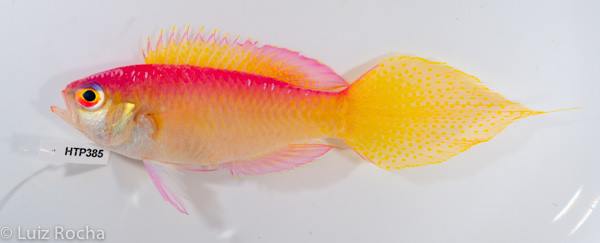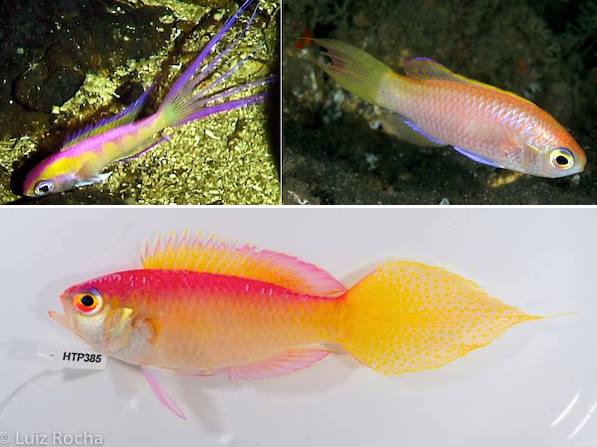The recent expedition to the Philippines have yielded many bonuses for the California Academy of Sciences. A few days ago we saw the collection of Sacura speciosa, and just when we thought nothing could top that, boom. A new Grammatonotus species with the most fancy coloration and leaf-blade tail. We know very little about this new species, but here’s what we do know so far.

The first Grammatonotus was captured by Brian Greene at 471.2 ft. With the release of this photo by the CAS, the rare fish network sparked almost immediately into a flurry of social media shares and comments. Not long after, Brian managed to capture three more specimens at 487 ft, in Anilao, Batangas, Philippines. The tail of this species is very unique, and differs very drastically from the two other known species of Grammatonotus we know of currently. More information of which, can be found later in this article.

According to Brian, the species is easy to decompress but does not handle the temperature fluctuations of the thermal climbs while surfacing. In this video below you see Brian showing the rest of the dive team the specimens in his collection jar. Almost immediately the characteristic lanceolate tail is seen, and makes this fish look almost like a super fancy goldfish.
The genus Grammatonotus, apart from this new species, contains six members of splendid perches. Of which, only two have been photographed or filmed alive in the wild. All are found in very deep waters and are almost never seen by commercial diving. We have below, two examples of the six.

Grammatonotus macrophthalmos is a colourful fish with incredibly long broom tail filaments rising outward from the soft rays of its caudal fin. The predominantly yellow and purple fish is incredibly eye catching, but lives in ridiculously deep waters of around 350-500 meters. This photo is a screen capture from a submersible video, and it is currently the only known live image of this fish in the wild.

Grammatonotus surugaensis is the least rare of the genus, and is the species most frequently photographed and captured. It is also found in substantially shallower waters than the others in its genus, and can be found swimming close to the substrate at depths of around 160ft. G. surugaensis is found in Japan, and is less colourful than G. macrophthalmos. It also possesses on its tail, filamentous extensions coming out from the soft rays. However the filaments are never as long as in the former.
With the addition of a new Grammatonotus species to the genus and the third to be seen alive, we’re more excited than ever to see how the story unfolds for this new fish. We wait with bated breaths the official description, as well as anymore new surprises the Bishop Museum + CalAcademy science team pull up from the Philippines.



